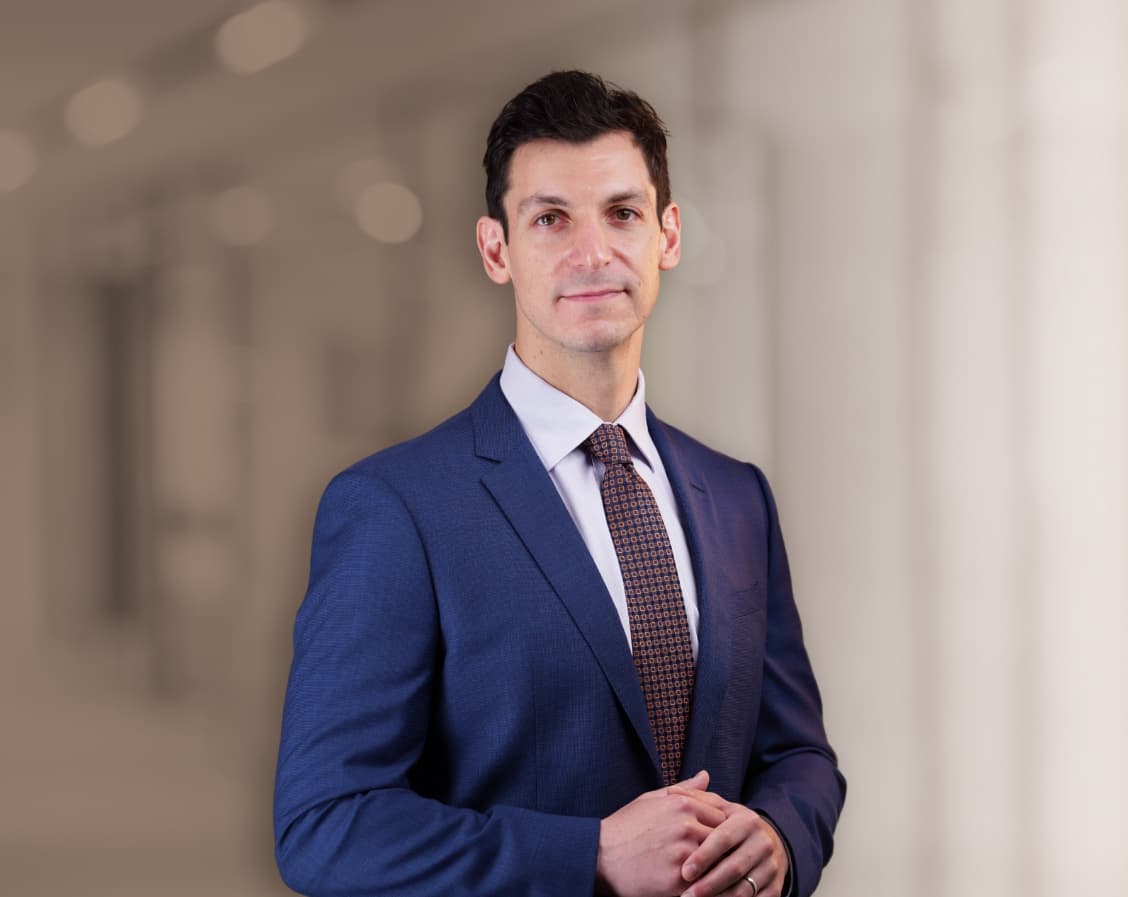How Much Is a Breast Augmentation in San Antonio, TX? Weighing Cost vs. Value
Breast augmentation is one of my most highly requested cosmetic procedures—and it's easy to understand why.… Read On
*Keep in mind that each patient is unique and your experience may vary.
Ablavsky Plastic Surgery:
Dr. Michael Ablavsky
19296 Stone Oak Pkwy, Suite 102
San Antonio, TX 78258
Phone: (210) 942-6672
Monday–Friday : 8:30 a.m.–4:30 p.m.
Breast augmentation is one of the most frequently performed cosmetic surgery procedures in San Antonio, Texas, and throughout the U.S. and internationally. The procedure involves either inserting implants or using fat transferred from another area of your body to enhance the size and shape of the breasts.
There are several reasons women decide to get breast implants, such as:
Breast augmentation patients often say that improving the appearance of their breasts for any of these reasons makes them feel more confident and feminine. Most women in good overall health who have realistic expectations about how the surgery will affect their lives are great candidates for the procedure.
This feature contains nudity. Please click OK to confirm you are at least 18 years of age and are not offended by such material.
The cost of breast augmentation at our San Antonio practice depends on the type of implants used and the time required to complete the procedure. During your consultation, we will provide you a customized estimate for your procedure depending on your needs.
Breast augmentation with silicone implants ONLY $7,500!
Request a consultation or call (210) 942-6672 to take advantage of these savings today!
Choosing breast implants is an exciting part of breast augmentation, and Dr. Ablavsky helps guide your decision based on the aesthetic goals you describe during your consultation. Together, you and Dr. Ablavsky can determine which implants are right for you.
The options involved with choosing breast implants include:
Material:
A breast implant’s outer silicone shell can be filled with either saline (sterile saltwater) or are pre-filled with cohesive silicone gel. Silicone implants are more popular. Patients say they look and feel like more natural breasts but it does come down to the patient’s choice. Because surgeons fill saline implants after inserting the shell, the incisions are slightly smaller than those made for silicone implants.
Size:
This is the choice patients typically focus on the most. It’s helpful to look at before-and-after photos to get a sense of how different implant sizes look, but you should be sure to view patients with a body type similar to yours. The same implants can create very different results in different people. Implant sizes are measured in cubic centimeters (cc) rather than bra cup size. Generally, a 130cc to 150cc breast implant will increase your breast size by a bra cup size.
Profile:
An implant’s profile relates to how far it projects from the chest.
Dr. Ablavsky recommends implant profiles after measuring the width of your chest and considering your body’s proportions.


Dr. Ablavsky is a board-certified, fellowship-trained plastic surgeon whose patients trust him for natural-looking results from face, breast, and body procedures. He listens closely to his patients' concerns and takes the time to answer their questions with honesty and compassion.
Meet Dr. Ablavsky Request Your ConsultationI highly recommend Dr. Ablavsky for any plastic surgery procedure.
K.C.
Dr. Ablavsky believes making incisions at the base of the breast—where breasts attach to the chest—provides the best results for breast augmentation patients. This location, called an inframammary incision, accommodates implants of all sizes and enables him to create the implant pocket more easily. The inconspicuous location effectively hides the scars, which fade over time.
Choosing where to place breast implants—in front of the chest muscle or behind it—depends on a patient’s anatomy, the amount of existing breast tissue, personal lifestyle, and the type and size of the implant. During the consultation, Dr. Ablavsky discusses the options and may recommend what’s best for you.
Subglandular placement involves placing the implants in front of the muscle, behind the existing breast tissue. This option is for women with enough existing breast tissue to camouflage the implant. Patients without a lot of breast tissue may be concerned about ripples or a visible implant border.
Implants placed below the pectoralis muscle can produce results that look and feel more natural than those in the subglandular location. This position is recommended for women with thin breast skin, minimal breast tissue, or low body fat.
Using this technique, the upper portion of the implant is covered by muscle and breast tissue, while the lower portion is covered by breast tissue alone.
Taking fat from another area of the body and transferring it to the breasts is sometimes called natural breast augmentation. It’s an option if you want a modest size increase—about one bra cup size. The results are less predictable than with implants because some of the fat won’t survive the grafting process.
Some patients and surgeons choose to combine fat transfer with breast implants to achieve a more customized and natural-looking result. This combined approach leverages the benefits of both procedures: It uses implants to significantly enhance breast size and the transferred fat to refine the shape, symmetry, and feel of the breasts.
Dr. Ablavsky may also combine fat grafting with a breast lift, especially for patients who are having implants removed, as shown in these before and after photos:
Each patient’s recovery experience is unique. The recovery time can vary, depending on the implant size, type, and placement. Swelling and bruising are normal and typically peak within the first week. Women often take a week off work for non-strenuous jobs.
Week 1: Rest & Gentle Movement
Expect tightness, swelling, and mild to moderate discomfort that you can manage with prescribed pain medication.
Begin gentle walking around the house to encourage circulation and reduce the risk of blood clots.
Wear your supportive surgical bra as directed.
Week 2: Early Healing
You may feel ready to return to work if your job doesn’t require heavy lifting or other physical activity.
Expect continued swelling and bruising that begins to improve.
You may be ready to return to light daily activities, but avoid lifting, stretching, or strenuous movement.
Dr. Ablavsky will monitor your healing progress with follow-up visits.
Weeks 3 to 4: Gradual Return to Normal Activities
Continue wearing your support garment to minimize swelling and help implants settle.
Light activity outside the home becomes easier, although exercise should still be avoided unless cleared by your doctor.
Weeks 5 to 6: Increasing Activity
Swelling continues to subside, and implants start to “drop and fluff.”
Most patients can resume light exercise and more active routines with Dr. Ablavsky’s approval.
Incisions are healing well, and the breasts are beginning to look and feel more natural.
After 6 Weeks: Full Activity & Final Results
Most patients can return to full physical activity, including workouts and lifting.
Residual swelling gradually resolves, and the final breast shape and position become more refined.
Scars will continue to fade and mature over the coming months.
Dr. Ablavsky provides you with detailed post-op instructions regarding medication and activities to avoid during recovery.
You’ll typically need to wear a surgical bra for about 4 to 6 weeks after breast augmentation. You should wear it around the clock, including while sleeping, to promote proper healing and provide added support.
Most women are able to breastfeed after breast augmentation, especially when Dr. Ablavsky places the implants beneath the chest muscle using an inframammary incision, which preserves the milk ducts and glands. However, results can vary, so it’s important to discuss your plans for future breastfeeding during your consultation.
The weight of breast implants depends on their size and fill material (silicone gel or saline), but on average, implants add about 0.2 to 0.9 pounds (90 to 400 grams) per breast. For example, a 300 cc implant weighs roughly 0.66 pounds per implant.
Breast implants can make mammograms slightly more challenging to interpret, but experienced radiology technicians use special implant displacement (Eklund) views to visualize as much breast tissue as possible. Be sure to tell your technologist you have implants so they can adjust the screening technique appropriately.
Because the breasts become fuller and rounder, the nipples may appear slightly higher or more centered after breast augmentation, but this is due to changes in breast shape rather than movement of the nipple itself.
Some patients experience temporary changes in nipple sensation, ranging from increased sensitivity to numbness, especially in the first few weeks after surgery. In most cases, feeling gradually returns to normal within a few months as the nerves heal.
Yes, breast implants typically need to be replaced after 10 to 20 years, although many patients keep theirs longer without issues. Dr. Ablavsky monitors your results during regular follow-up visits and may recommend replacement only if you experience a leak or rupture, or if you desire a different size or style.
Most patients can sleep on their back within 1 to 2 weeks after breast augmentation, but you’ll need to sleep upright or at a slight incline during the first week to minimize swelling and pressure on your incisions. Dr. Ablavsky typically recommends continuing to wear a supportive surgical bra while sleeping for the first 4 to 6 weeks; once you’re fully healed and cleared at your follow-up appointment, you can sleep without a bra and return to your usual sleeping positions.
If you’re looking in the San Antonio area for a breast augmentation surgeon, request a consultation with Dr. Ablavsky using the online form, or call our practice at (210) 942-6672 to schedule an appointment.